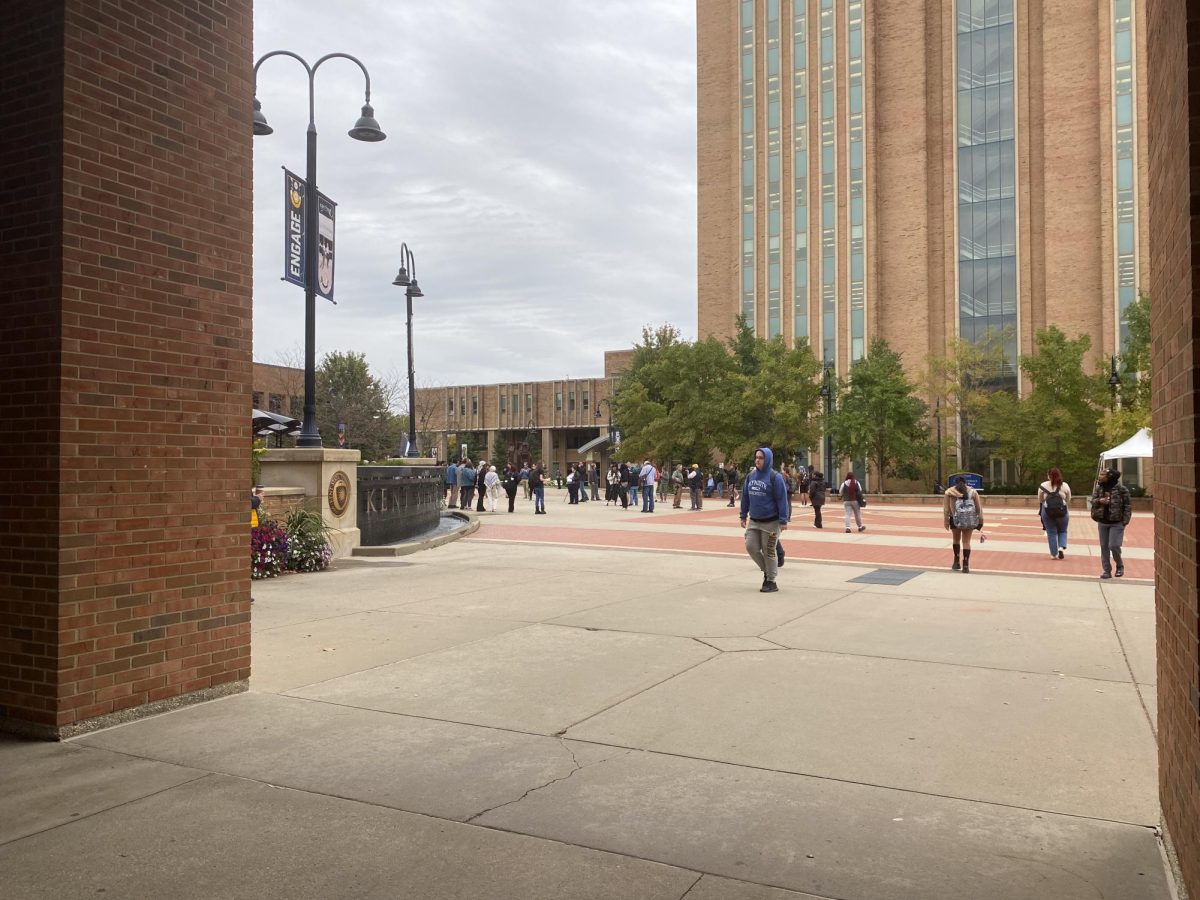In 2020, 23% of undergraduate students nationwide experienced some form of food insecurity, as reported by the National Postsecondary Student Aid Study.
According to the USDA, food insecurity is defined as “a lack of consistent access to enough food for every person in a household to live an active, healthy life.”
For students struggling on Kent State’s campus, there are several resources available to help alleviate food insecurity, such as the Crisis, Advocacy, Resources, Education, and Support Center (CARES), which runs a donation-based food pantry for students.
Josh Perkins, the director of the CARES Center, said food security on campus is a complex issue, but one of its driving causes is the financial burden of being a college student, and when the expenses of college life start to take a toll on students, food is one of the first things to go.
“What we hear a lot is, ‘I’m skipping meals, I don’t have a meal plan.’ We also see students that ask for an exemption for a meal plan even though they live on campus, just because they just can’t afford it,” he said.
The center has seen an increase in outreach for food support, with approximately 500 students reaching out for food security resources this year alone.
Perkins said the increase is likely due to a variety of factors, such as more awareness for the center, but the overall need parallels the national weight of the issue.
“I think if you look even more broadly, with the cost of everything, inflation, it has continued to just exacerbate the need,” he said. “The need was already great, and I think students are hit in general.”
Students among the most at risk of being food insecure, Perkins said, are those with a high financial need, and this is because the financial aid that they receive leaves no room for error.
“Let’s say you’re commuting to Kent State and your brakes go out, or you get in a car accident,” Perkins said. “There’s no extra money. What happens with student’s aid sometimes is it doesn’t really calculate the unexpected.”
Ari Potter, a freshman visual communication design student on campus, said the weight of paying for tuition and a dining plan can be overwhelming.
“Financial aid doesn’t cover everything,” she said, “so some of it has to come out of pocket.”
Kent State’s annual university budget update from last year reported that revenue from dining plans accrued $1.7 million above budget.
Perkins said the cost of dining plans can put an additional toll on students, but he thinks Kent State Culinary Services is doing everything they can to address the issue, as they have been a great partner for the center.
“I think there’s a number of options that students can choose, but as far as dining plans themselves, I think there’s a lot of opening and understanding there,” he said.
Sydney Jordan, the assistant director of the CARES Center, said partnering with Culinary Services gives the center more access to fresh food, such as allowing the center to provide fresh bagels for students each day.
“They kind of sponsor our bagel program. So every day we have fresh bagels at the end of the day, and it’s a food recovery, so whatever’s not used in Einstein’s, we get it, and it’s an opportunity for us to give students fresh bagels, and then we’re not burning food out as a university,” she said.
Being a donation-based pantry, Perkins said, means that the center’s ability to provide food to students depends on the amount that they receive, and the center has seen an up-tick of demand this semester.
“The impact translates to how much we receive, so if we get a huge donation and have lots of food, we are able to offer more pantry times,” he said. “We always want to have stuff here if students come. That is really important to us.”
Mackensie Daniel, a junior sports medicine student, said though she does not personally have an issue with her college expenses, she is glad that there are resources on campus for those who are food insecure.
“It’s definitely helpful for those students who are first-generation or just don’t have the resources that other students have,” she said.
One of the biggest things students can do to alleviate the pressure of food insecurity, Jordan said, is to spread awareness about it.
“I think as we kind of grow and market and push things out, I think that terminology is becoming more relevant,” she said. “I think the other thing is helping students understand that it’s occurring more regularly than they might realize.”
Perkins said he wants more people to be aware of the existence of food insecurity and its impact on students.
“We have students on our campus that are skipping meals, that don’t have a secure place to live, that are stressed because they don’t know where they’re going to get their next money to pay for next semester,” Perkins said. I think it’s important to think about how we view our students. Do we just want our students to survive versus thrive, and that’s something we talk about a lot here.”
Janson McNair is assistant photo editor. Contact him at [email protected].





